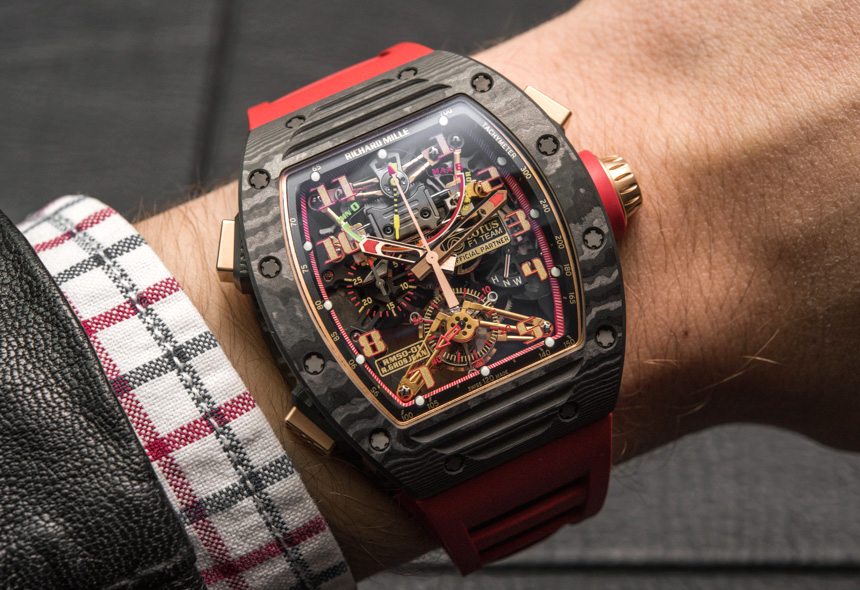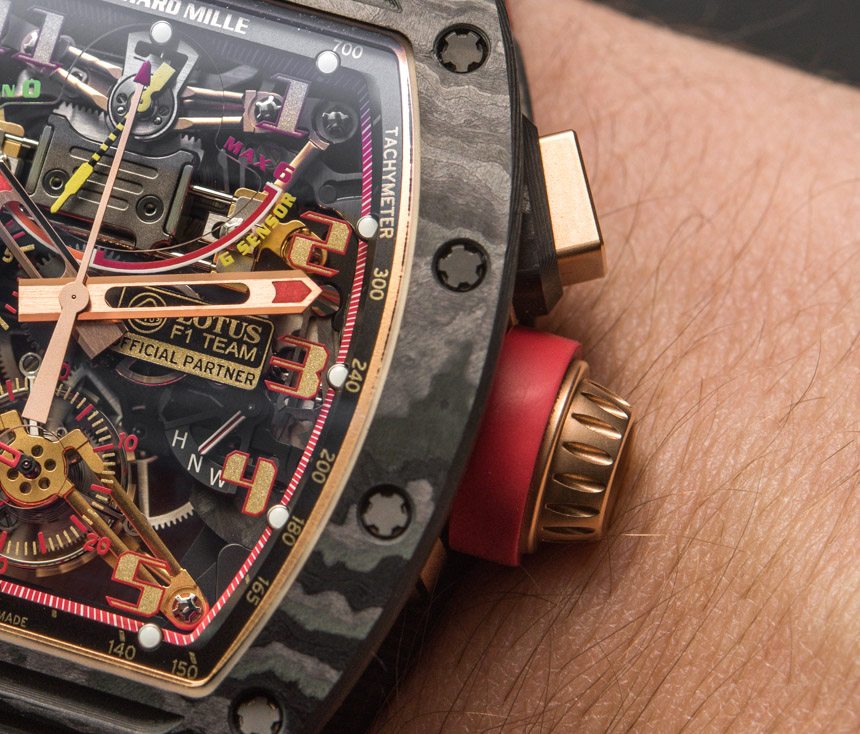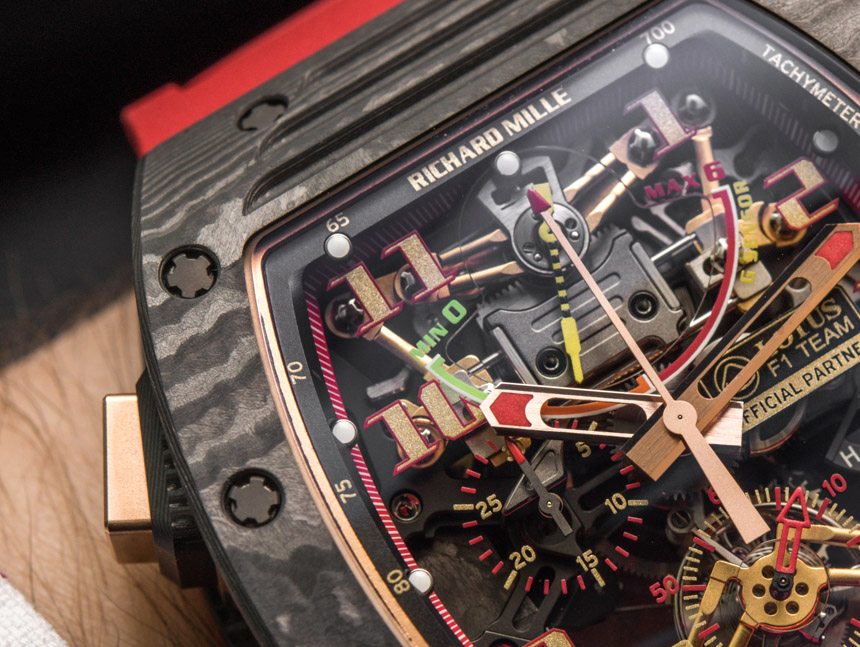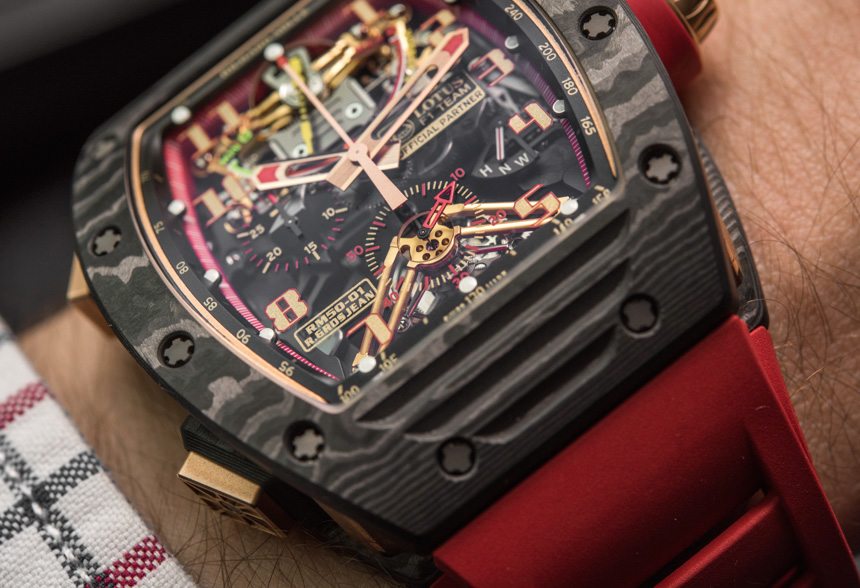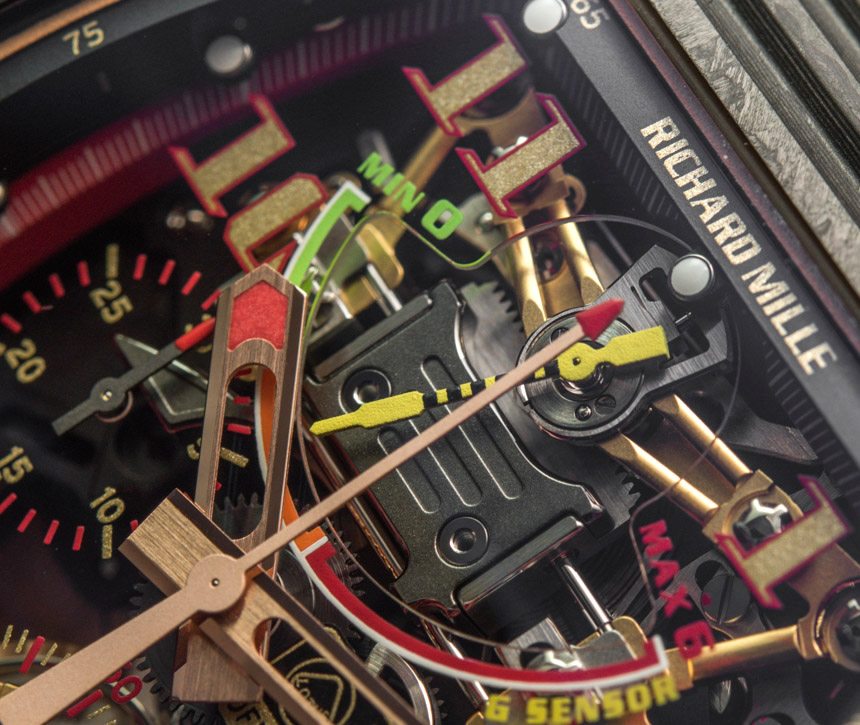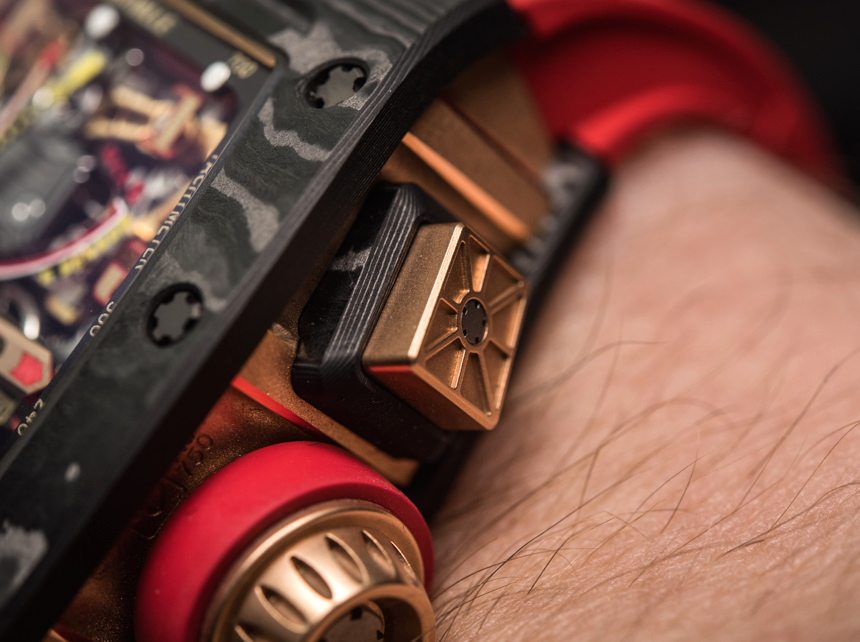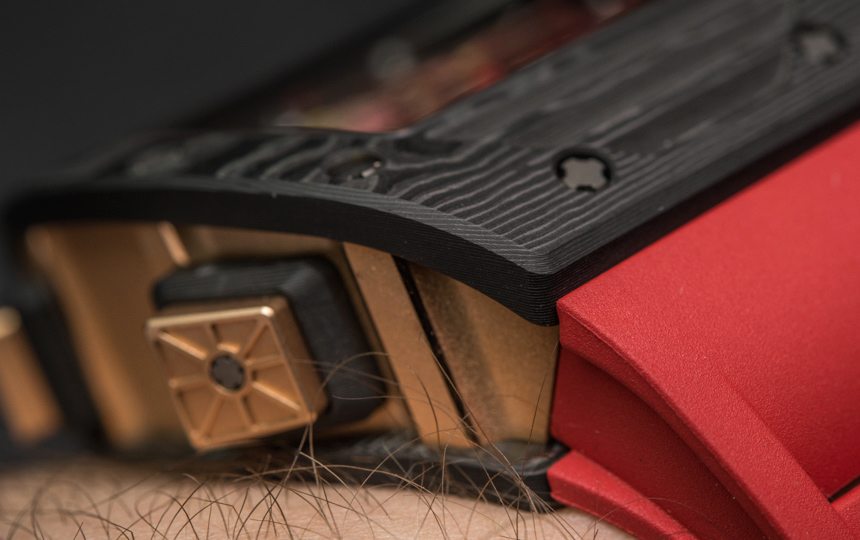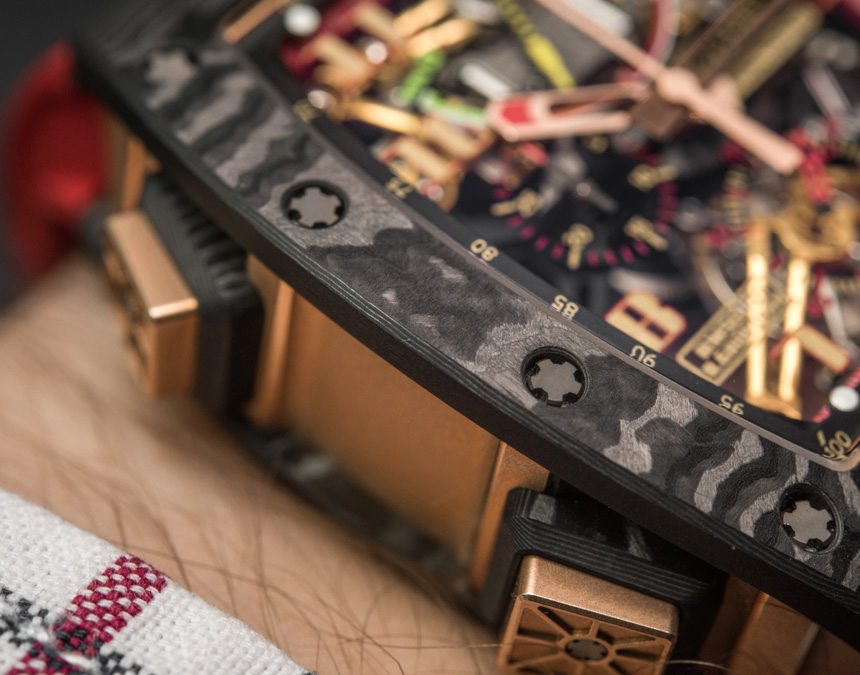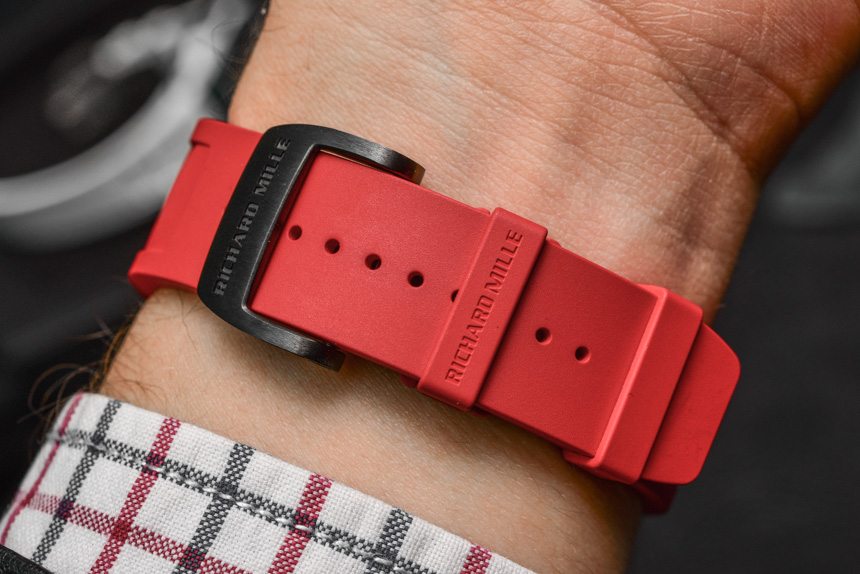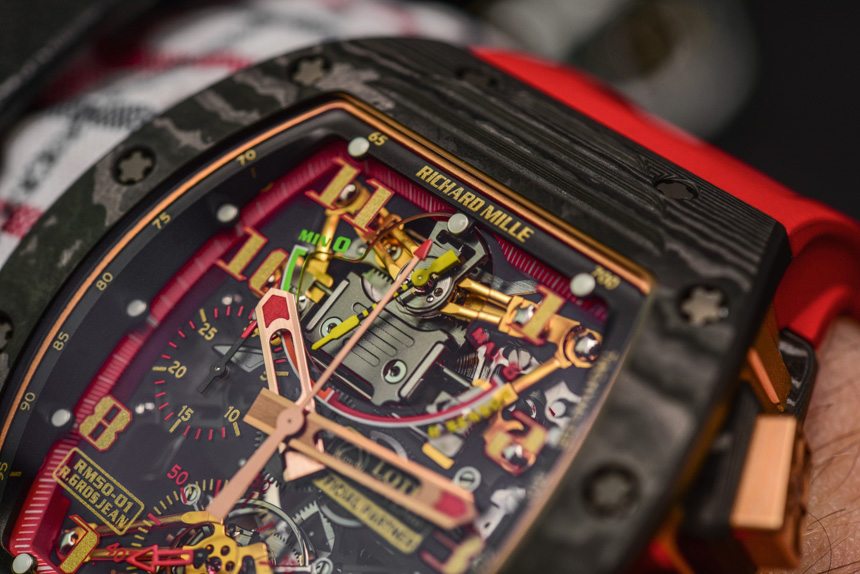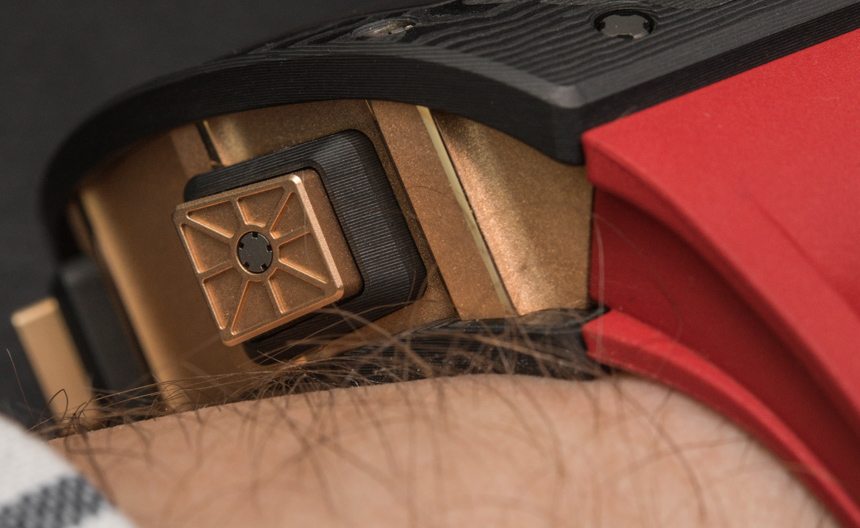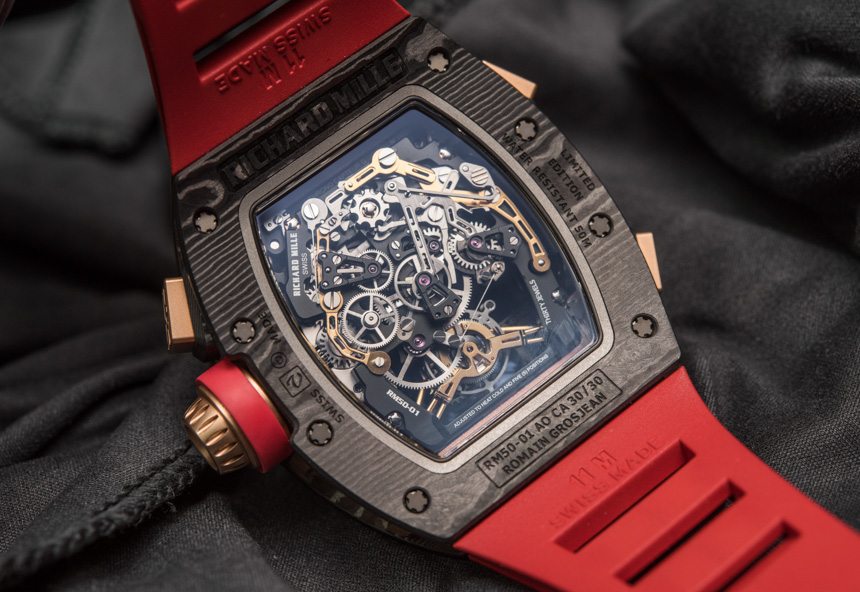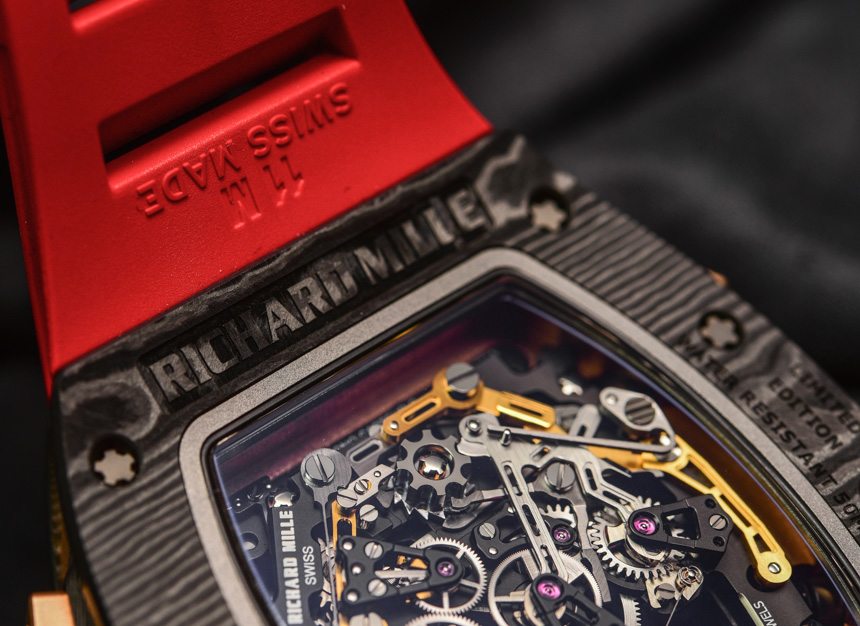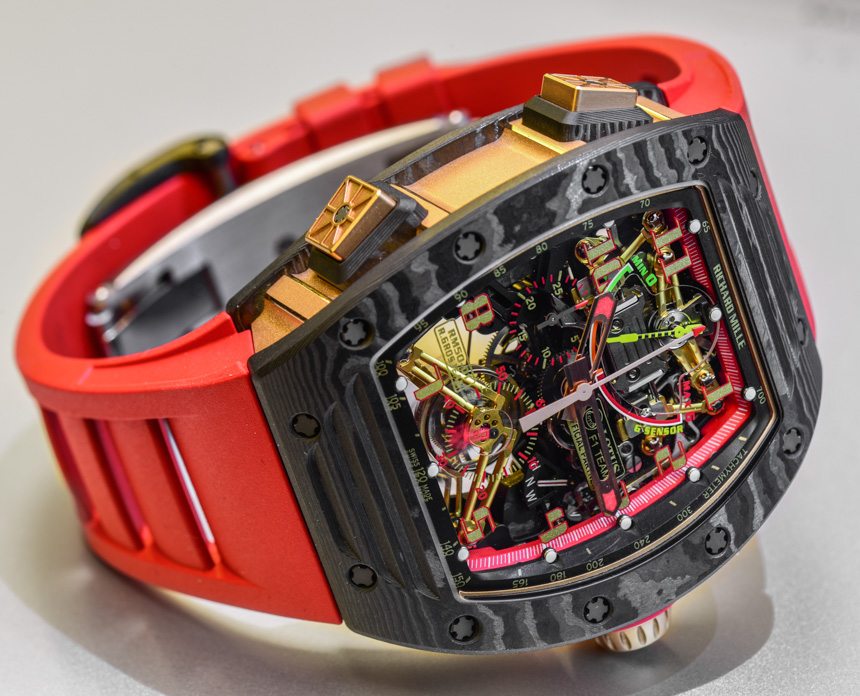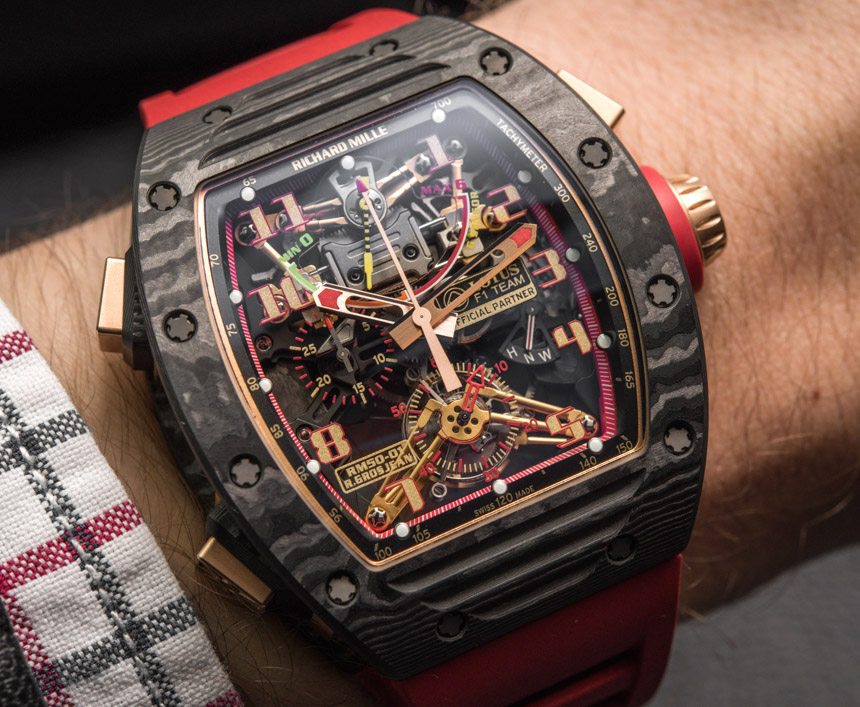
Full disclosure: we didn’t exactly get behind the wheel of a Lotus F1 team car and hit the track to put the physics lesson tucked inside Richard Mille’s latest creation to the test. But then again, it won’t take an eye-watering lap around an undulating course to appreciate the mechanical marvel that is the Richard Mille RM 50-01 G-Sensor Tourbillon Chronograph – a watch utilizing several familiar Richard Mille signatures in an entirely new configuration designed “in perfect harmony with the world of F1.” I don’t know if I can measure that kind of harmony, but this piece is classic Richard Mille. The rest is a matter of taste, really.
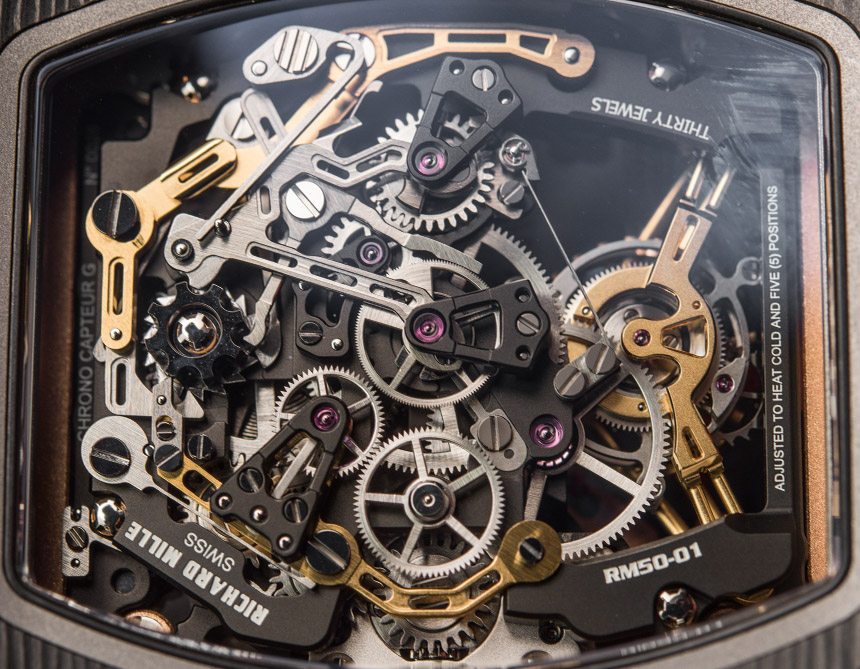
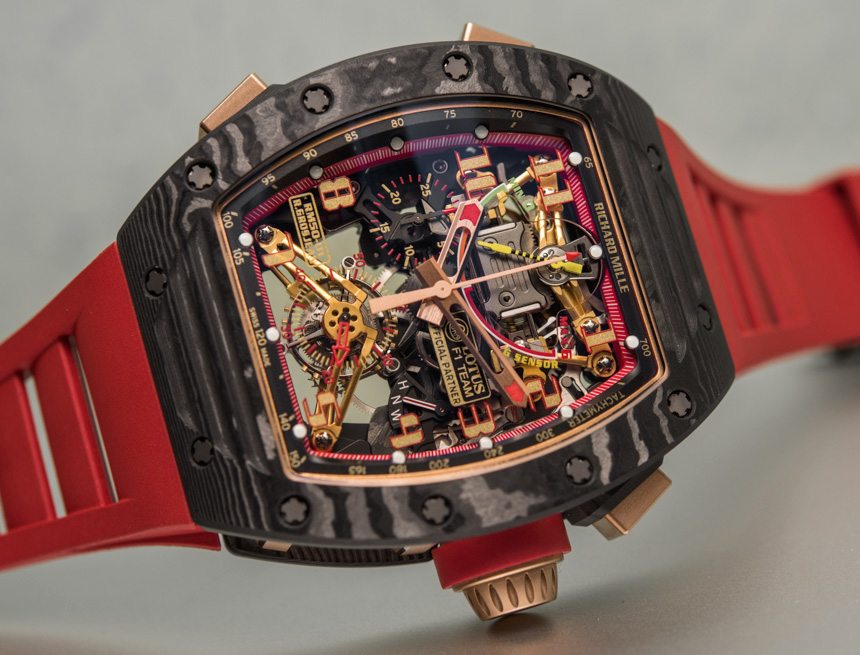
Collaborative partnerships between ultra high-end watchmakers and the supercar elite aren’t exactly hard to come by in this day and age. However, the Richard Mille RM 50-01 G-Sensor Tourbillon Chronograph takes the usual team logo and livery adoption to the next level with the inclusion of a G-force sensor at 12:00. The G-force sensor is a particular novelty aimed at F1 drivers, who might find it handy while being routinely subjected to powerful G forces whilst out on the course. To put that into perspective, when an F1 car goes from a near-standstill in a sharp corner to its top speed of just under 200mph in under 3 seconds, the driver’s body could experience up to about 5 Gs – a force rendering appendages like head and arms to carry that of five times their actual weight.
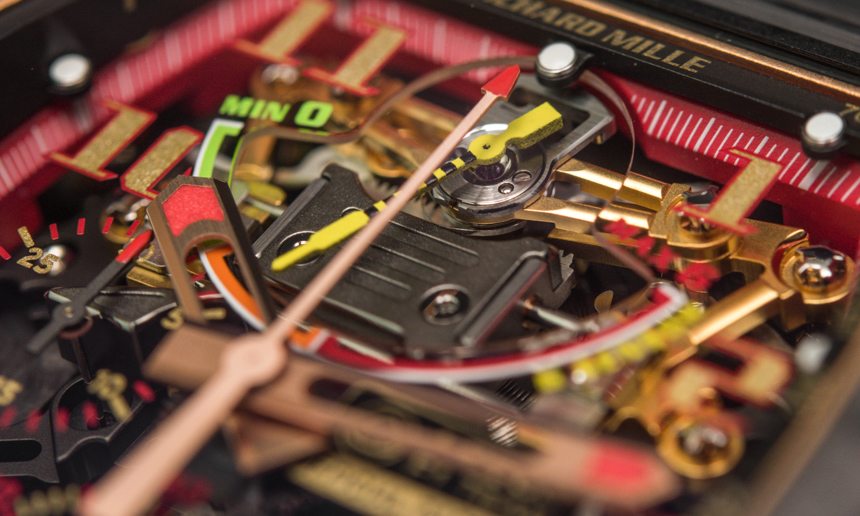
So not only does it take a special type of vehicle to create these incredible forces, and a special type of driver to harness them, it also takes a very special watch to endure and simultaneously measure them. Now, whether or not glancing down at one’s wrist at 150mph is a prudent thing to do is probably a question best left to experts like Richard Mille ambassador and Lotus F1 driver Romain Grosjean, for whom the watch was designed. Our mission this time around, is merely to glance down at our wrist for impressions of this spectacular watch at zero miles-per-hour.
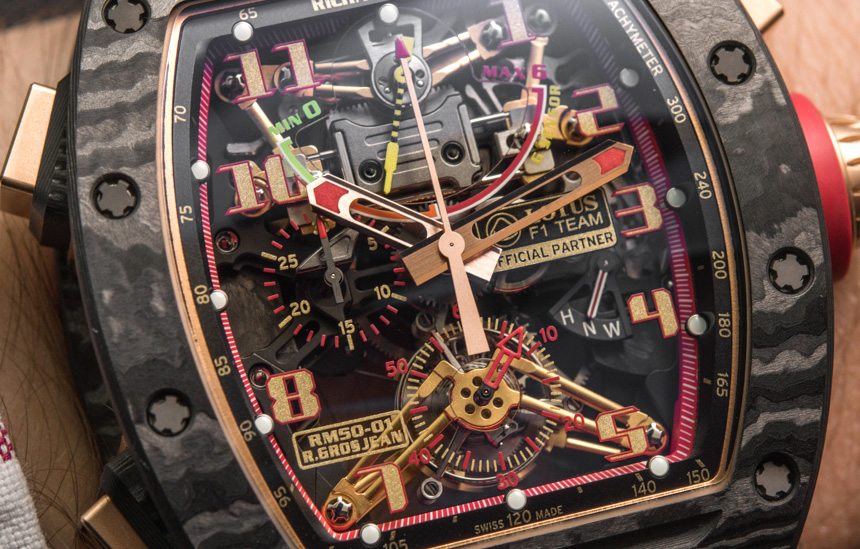
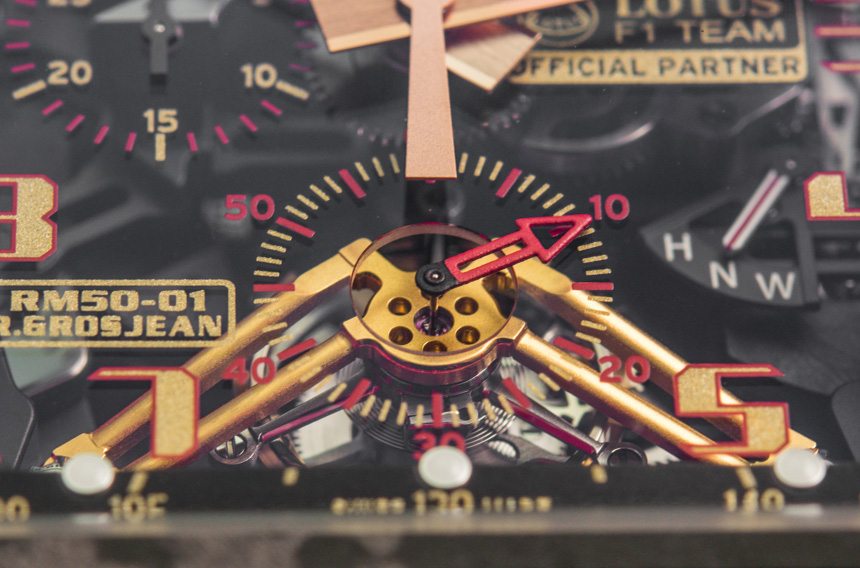
Granted, we’ve seen Richard Mille’s G-force sensor before (last time, in 2014 with the RM36-01 built for rally car driver Sebastien Loeb), but this time around, the Swiss watchmaker has doubled down. They have added not just a manually wound column wheel chronograph, but a tourbillon as well. It all comes in a surprisingly compact design given its 500-plus components. Unsurprisingly, it also yields a dial that has a lot going on which is par for the course with any Richard Mille watch. However, a closer inspection reveals a breakdown of the usual suspects: a running seconds counter at 6:00, a 30-minute chronograph counter at 9:00 (started and stopped by pushers at 8:00 and 10:00, respectively), a “gearbox” indicator at 4:00 showing crown position (Winding, Neutral, Hand-setting), and the yellow G-sensor at 12:00, which swings from zero to a weighty 6 Gs, and can be reset from the pusher just above the crown at 2:00. For obvious reasons, we’ll just be taking Richard Mille at his word that the sensor works as intended, should the need ever arise.
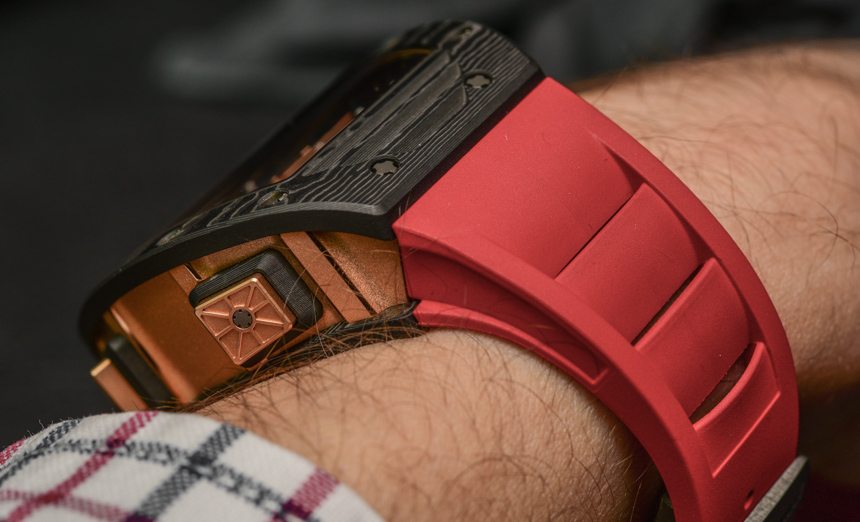
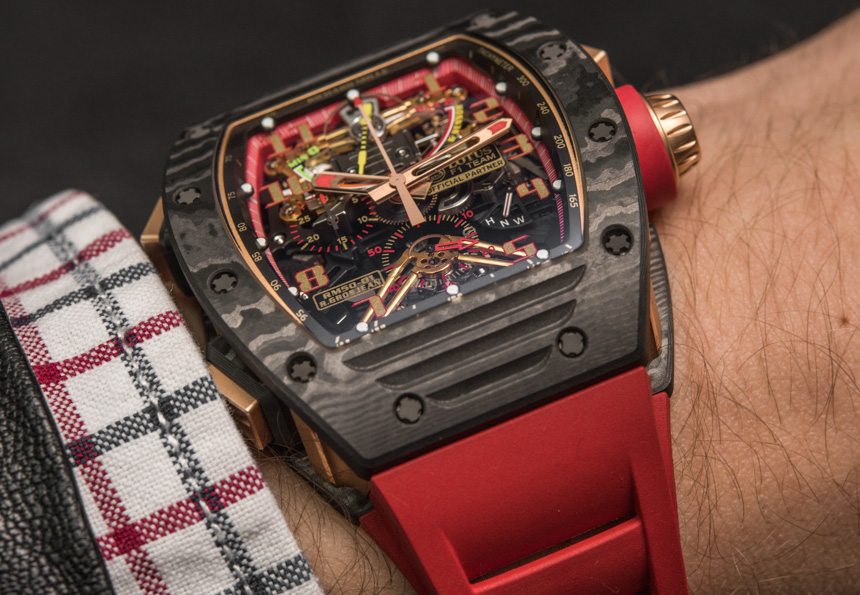
Despite the addition of the G-sensor, tourbillon, and chronograph complications, the watch’s signature tonneau-shaped case still measures a reasonable 42.7mm wide and 16.4mm thick, with a lug-to-lug measurement of 50mm. These are familiar measurements in the RM family tree which we’ve routinely found to wear comfortably due to the watch’s impressive lightness. That feathery signature is owed to its NTPT (North Thin Ply Technology) carbon construction – a process favored by Richard Mille that yields a composite case with incredible resistance to stress. To wit: each case is comprised of over 600 layers of ultra-thin woven carbon filaments, which are superheated and compressed together before being individually CNC-machined into case blanks, ultimately lending the finished case and bezel a unique waved appearance, not unlike a rich wood grain or folded damascus steel.
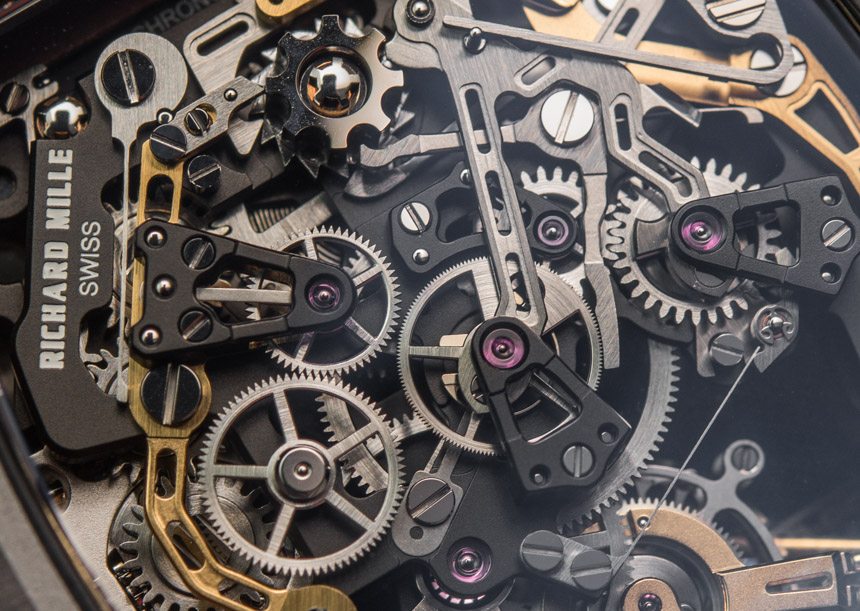
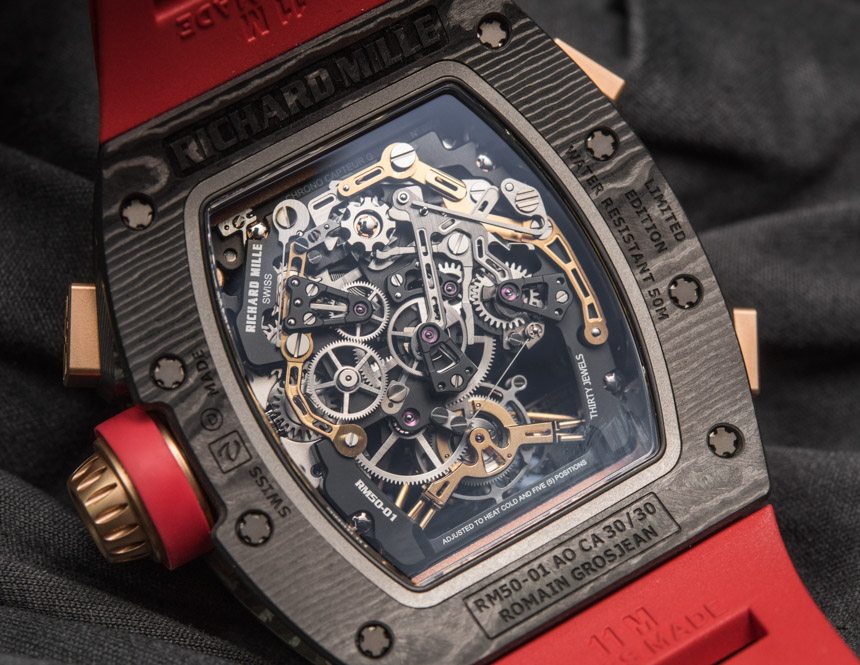
However, the guts of the Richard Mille RM 50-01 G-Sensor Tourbillon Chronograph is where its engineering truly shines. This is both figuratively and quite literally as the stainless steel tourbillon and g-sensor bridges are galvanized a gold color that deeply contrasts the gunmetal-colored grade 5 titanium baseplate and bridges, and conveniently matching the Lotus F1 team’s iconic black and gold livery. But the real kicker here is how Richard Mille marries the complications of haute horlogerie to real-world brute force, yielding a beautifully-rendered movement that’s unaffected by the shock and force routinely sustained by F1 drivers. In this case, the watch only measures up to a “mere” 6 Gs – far short of the strongest G forces a human has ever survived (a record-setting 46 Gs, and that required a test pilot being strapped to a rocket sled in 1954), but still significant enough for a vote of confidence that suggests “if you can drive it, the watch can take it.”
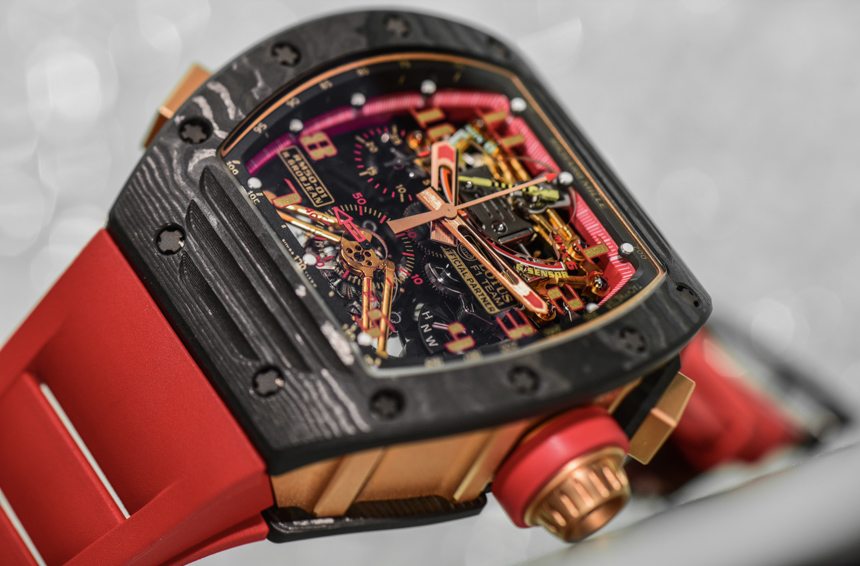
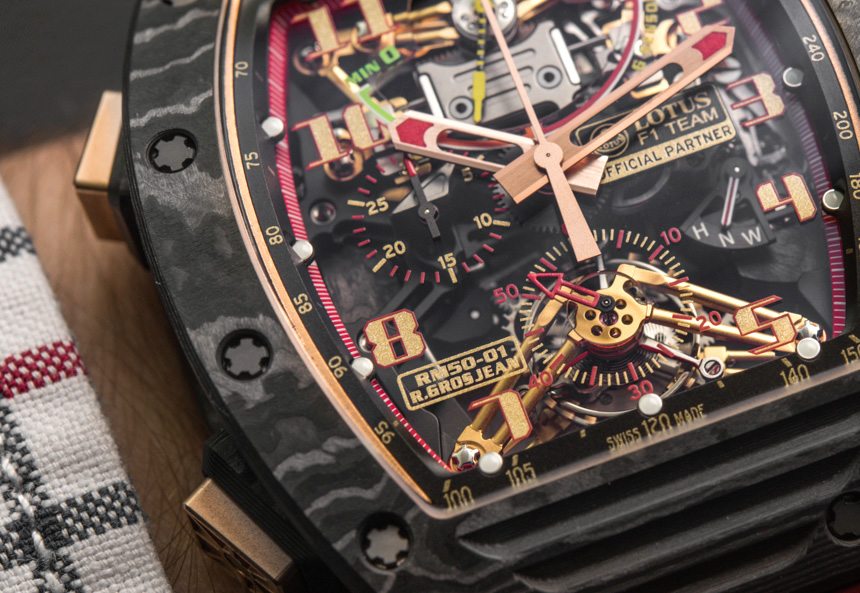
Only 30 pieces of the Richard Mille RM 50-01 G-Sensor Tourbillon Chronograph have been produced. Lead-footed racing fans can be expected to pony up $888,000 a price which also includes a 1/5th scale model of the watch’s design inspiration: the Lotus F1 racing car. richardmille.com

